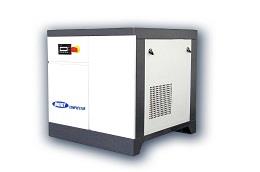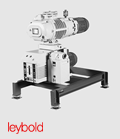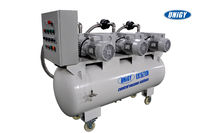Food and beverage
-
With the changes in social consumption habits and the increasing emphasis on food safety, the application of vacuum and compression technology in packaging and food processing is becoming increasingly widespread. Food processing covers a wide range of applications, and vacuum and compressor equipment are often used for different characteristics.
Sugar Refinery and Baking Plant
Sugar refineries and roasting plants use compressed air to transport syrup. The mixing of certain liquids and liquid immersed foods, such as pickles, is achieved by inflating them with compressed air. The pressure filter also uses the same power. Canning factories use compressed air for canning machines, as well as for heat refining and disinfection.
The high nitrogen content environment in the storage area delays the spoilage of many foods, such as apples, which can be stored for several months longer. This is mainly due to a decrease in oxygen content, while the addition of small amounts of carbon dioxide and other gases inhibits enzyme reactions and delays the growth of molds and fungi.
Many food packaging uses inert gases to isolate them from oxygen, which is the main cause of most spoilage. The commonly used gases are nitrogen and carbon dioxide, and nitrogen is used in most cases due to its high inertness. Carbon dioxide is soluble in water, so in some cases it is slightly acidic. Nitrogen is more commonly used in foods with aromatics. Carbon dioxide can maintain the color of salted meat. Gas packaging is more popular when vacuum packaging can cause food slices to break or become sticky and difficult to separate. Gas packaging is also particularly suitable for crispy freeze-dried foods.
In a baking plant, air is used to remove biscuit residue, butter is sprayed onto a pan, and the amount of dough measured by an automatic rolling mill is pressed tightly. A jet is the best method for cleaning bread crumbs in a bread slicer without causing the machine to shut down. One of the newly discovered and rapidly developing important applications of compressed air in baking plants is the handling of flour through pneumatic conveyors. This conveyor completes flour handling fully automatically from the unloading truck. The complete flour handling process is carried out economically and hygienic in a closed pipeline system without any manual handling.

-
Food packaging
By reducing the residual oxygen concentration, the growth of aerobic bacteria is restricted, and the storage period can generally be extended by 5-10 times. In addition, vacuum packaging can prevent the volatilization of ingredients to maintain their original taste and texture, and can also reduce surface dehydration and hardening caused by dry and cold airflow.
Chamber packaging machine
The chamber packaging machine can be a single or double chamber type, with or without a belt conveyor.
This type of machine operates in a rhythmic cycle, pumping from atmospheric pressure to about 1 millibar every 0.5 to 2 minutes.
Typical vacuum system:
If the front vacuum pump is far from the machine, a single stage rotary vane pump or a dry pump can be combined with a Roots pump.
Modified Atmosphere Packaging (MAP) includes two steps: evacuation and inflation.
Depending on different needs, there may be one or more air extractions
The cycle of inflation and the protective atmosphere filled into the bag
There are usually the following types:
-High concentration of oxygen (O2) keeps red meat foods bright and fresh, ensuring both quality and freshness.
-Nitrogen_N2 (N2) is mainly used to fill the packaging volume and is not easily reactive, such as packaging protection during the transportation of fragile food.
-Carbon dioxide (CO2) reacts with water to form carbonic acid, with an acidic pH value, which can inhibit the growth of microorganisms.
-
Typical vacuum system:
Single stage rotary vane pump or dry screw pump, combined with Roots vacuum pump. In the case of oxygen reinjection, special vacuum pumps (excluding hydrocarbons and using inert oil) may be required, which are typically used for red meat packaging to enhance red color, as well as oxygen compatible sealing materials.
MAP Bulk Packaging:
These machines are commonly referred to as "Snorke machines" or "vacuum probe machines" and allow for simultaneous modified atmosphere packaging of multiple small or bulk bags of food. After extracting air, a mixture of O2 and CO2 gas is introduced into the bag (gas conditioning), and then automatically heat sealed.
A typical vacuum pump has a pumping speed of 10 to 65 m3 per stage H-1

-
Thermoforming/Stretching Film Packaging Machine - All types of products can be continuously packaged using plastic film or pre formed pallets on two rolls. The lower film is heated and molded into a tray container, while the upper film covers the tray and seals it to isolate the environment.
The upper film is positioned above the thermoformed container and then sealed to isolate the product from the ambient air. The product is in close fitting packaging or modified atmosphere packaging. Vacuum is necessary in both cases.
Send the film above the molding mold and use heating and vacuum to make a food container (hot forming). After rapid cooling of the container, the food is placed in the container and sent to the sealing mold. After vacuuming, it is heated to achieve sealing between the upper film and the container.
The typical vacuum pump pumping speed is from a single stage of 40 to 2000m3/h. Leibao's related products include SCREWLINE, SOGEVAC, and RUVAC.
Typical vacuum system:
A central vacuum system composed of a rotary vane pump or a dry vacuum pump.

-
Bag type automatic packaging machine - A bag type automatic or semi-automatic packaging machine replaces the original manual packaging. The operator only needs to place hundreds of bags at the bag picking location of the equipment at once, and the equipment will automatically perform operations such as bag picking, printing date, opening, weighing and dropping, emptying, sealing, and output.

